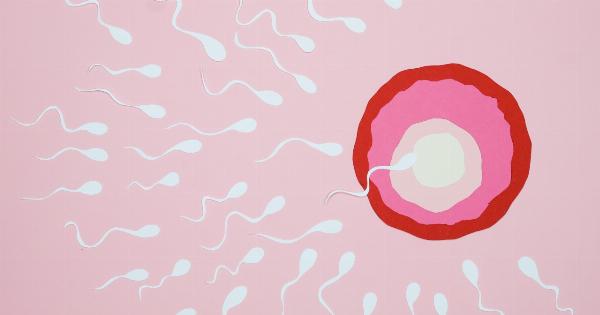The ticking of the biological clock is a reality many individuals and couples face when trying to conceive later in life. As age advances, fertility declines, making it challenging to achieve a successful pregnancy naturally.
However, advancements in reproductive technology have paved the way for a potential solution – cryogenic reproduction. In this article, we will explore the concept of bypassing biological clocks and the fascinating world of cryogenic reproduction.
What is Cryogenic Reproduction?
Cryogenic reproduction, also known as fertility preservation through cryopreservation, involves freezing and storing reproductive cells or tissues for future use.
This procedure allows individuals to preserve their fertility during their prime reproductive years, thus bypassing the limitations posed by the biological clock.
The Cryogenic Reproduction Process
The cryogenic reproduction process typically involves the following steps:.
Step 1: Consultation and Assessment
The first step in cryogenic reproduction is seeking consultation with a fertility specialist. During this consultation, the specialist will assess the individual’s reproductive health and discuss various options available to them.
This assessment may include a detailed medical history, physical examination, and fertility testing.
Step 2: Ovarian Stimulation and Egg Retrieval
If the individual opts for egg freezing, ovarian stimulation is necessary. This involves administering hormonal medications to stimulate the ovaries to produce multiple mature eggs instead of the usual one egg per menstrual cycle.
The growing follicles are monitored via ultrasound, and when they reach optimal maturity, the eggs are retrieved through a minor surgical procedure called transvaginal ultrasound-guided follicle aspiration. The retrieved eggs are then cryopreserved for future use.
Step 3: Sperm Freezing
For individuals or couples interested in preserving sperm, the process typically involves collection and freezing of sperm samples. This can be done through masturbation or other methods, depending on the situation.
The sperm samples are then cryopreserved for future use.
Step 4: Embryo Cryopreservation
In cases where couples or individuals have a partner, they may choose to create embryos through in vitro fertilization (IVF) before cryopreserving them for later use.
During IVF, eggs are retrieved from the ovaries and fertilized with sperm, creating embryos. The resulting embryos can then be cryopreserved for future implantation.
Step 5: Storage and Monitoring
The cryopreserved eggs, sperm, or embryos are stored in specialized facilities known as cryobanks. These cryobanks ensure the safe and secure preservation of the reproductive cells or tissues for an extended period.
The stored samples are periodically monitored to maintain their viability and quality over time.
Benefits of Cryogenic Reproduction
Cryogenic reproduction offers several potential benefits:.
1. Preservation of Fertility
Arguably, the most significant benefit of cryogenic reproduction is the preservation of fertility. It allows individuals to safeguard their reproductive potential and overcome the natural decline in fertility associated with age.
2. Postponing Parenthood
Cryogenic reproduction provides individuals with the opportunity to postpone parenthood and focus on their career, education, or personal goals without worrying about the ticking biological clock.
3. Assisted Reproductive Technology
The stored reproductive cells or tissues can be later used in assisted reproductive technology treatments, such as IVF.
This allows individuals or couples to have a higher chance of achieving a successful pregnancy when they are ready, regardless of their age.
4. Medical Reasons
Some individuals, especially those facing medical conditions or treatments that may affect their fertility, may opt for cryogenic reproduction to preserve their reproductive potential before undergoing surgery or medical procedures.
Ethical Considerations
While cryogenic reproduction opens up exciting possibilities, it also raises important ethical considerations:.
1. Access and Affordability
Cryogenic reproduction may not be accessible to everyone due to financial reasons. Fertility preservation procedures can be costly, making it a privilege for those who can afford it.
2. Unused Reproductive Cells or Tissues
There is an ongoing ethical debate regarding the status and fate of unused cryopreserved reproductive cells or tissues. Decisions must be made regarding their disposal, donation, or potential use in future research.
3. Long-term Storage and Viability
While cryobanks strive to maintain the viability of cryopreserved samples, concerns exist regarding the long-term storage and the potential for loss of reproductive potential over extended periods.
4. Emotional and Psychological Implications
Individuals or couples who pursue cryogenic reproduction may experience various emotional and psychological implications, including anxiety, stress, and decision regret. Proper counseling and support should be provided throughout the process.
The Future of Cryogenic Reproduction
Cryogenic reproduction holds significant promise as a fertility preservation technique, but ongoing research and advancements are essential to optimize success rates and improve affordability.
Increasing accessibility and addressing ethical considerations remain critical to ensuring equitable access to this reproductive technology.
As we delve further into the possibilities of bypassing biological clocks through cryogenic reproduction, it is crucial to strike a balance between embracing the potential benefits and acknowledging and addressing the ethical considerations.
With continued advancements and responsible implementation, cryogenic reproduction may be a powerful tool in helping individuals and couples achieve their reproductive goals.





























